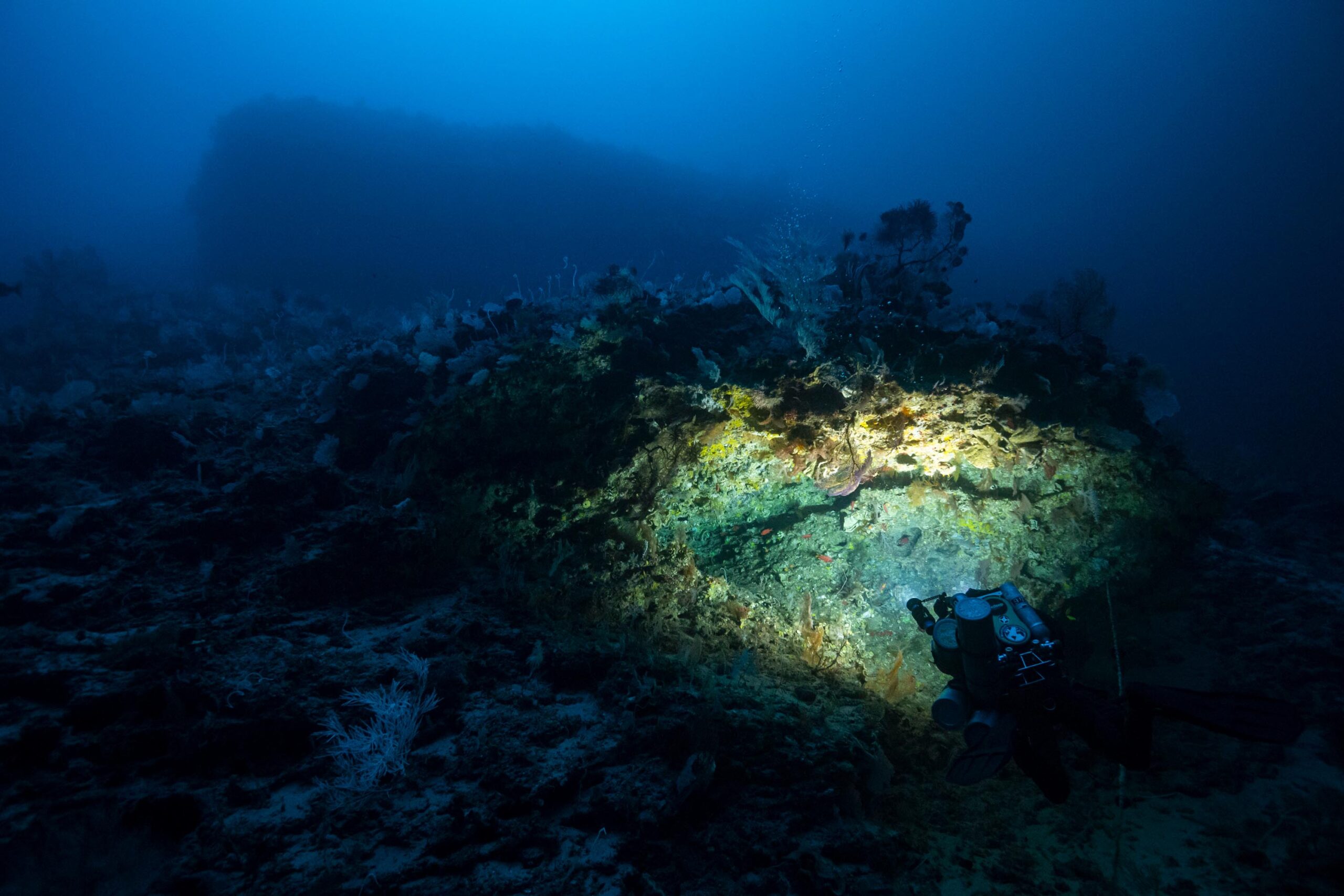The more we know, the better we can preserve
We explore one of the least known and least protected natural habitats on Earth:
Mesophotic Coral Ecosystems
FOLLOW US INTO THE TWILIGHT ZONE
Mesophotic Coral Ecosystems (MCEs) play a significant role in coral reef resilience in the face of global changes. They also host unique species. Protecting them is necessary to maintain healthy Oceans.

Our Mission
Having a better knowledge and understanding of our environment is key TO a more efficient preservation of the biodiversity. UNSEEN aims to help FILL the knowledge gap that exists on MCEs by leading pioneering expeditions to document and study them.
EXPLORE
Use technical diving to access mesophotic habitats and discover their inhabitants.
DOCUMENT
Use high-resolution imagery to bring hidden underwater life closer to people and show how rich and unique MCEs are.
RESEARCH
In collaboration with local research institutions, collect and process data for scientific and conservation purposes.
COMING SOON
DEEP REEFS OF THE FAR EAST II
Explore the virtually unexplored and unstudied deep reefs in North Maluku and Maluku waters, a home for new and endemic species to science.
PREVIOUS EXPEDITION
DEEP REEFS OF THE FAR EAST
Discover the unknown yet crucial deep-reef ecosystems in one of the remotest regions of Indonesia.
IT’S TIME TO PROTECT
Most of the natural ecosystems are already heavily damaged by human activities worldwide. The current fights led by scientists and conservationists are to try to restore some of them to their initial state while slowing down the ongoing destruction of the last wild places.
Documenting and studying the biodiversity of the deep reefs and understanding the threats they face from anthropogenic ACTIVITIES to raise awareness and propose concrete and quick solutions are critical for better ocean conservation.
But it needs to be done now, before it is too late.
Get in touch
Receive updates about our recent expeditions, exchange knowledge, start a collaboration, support us: we want to hear from you.
